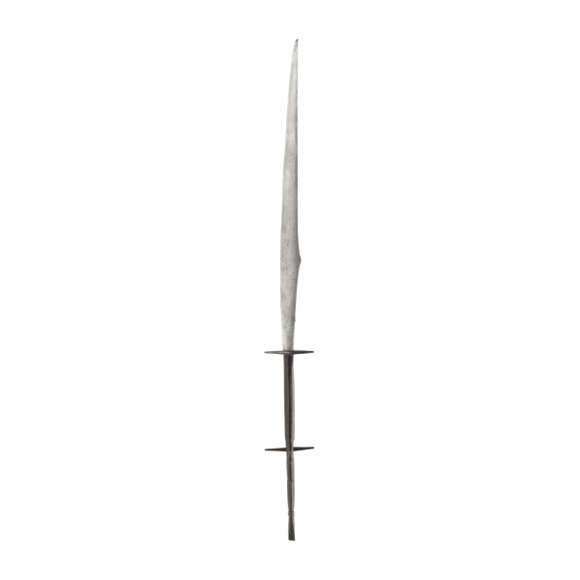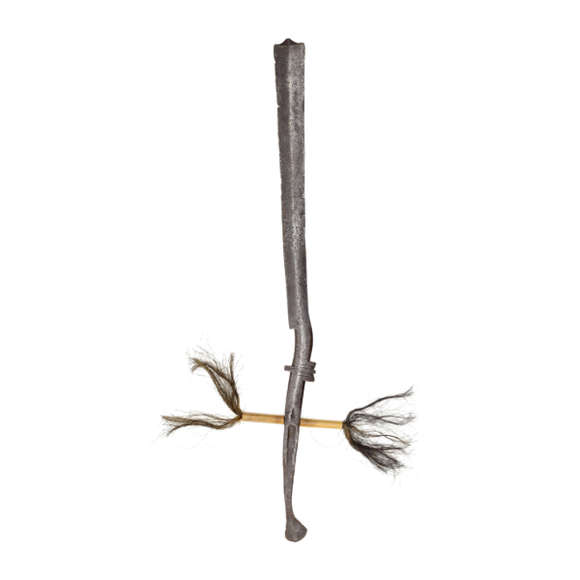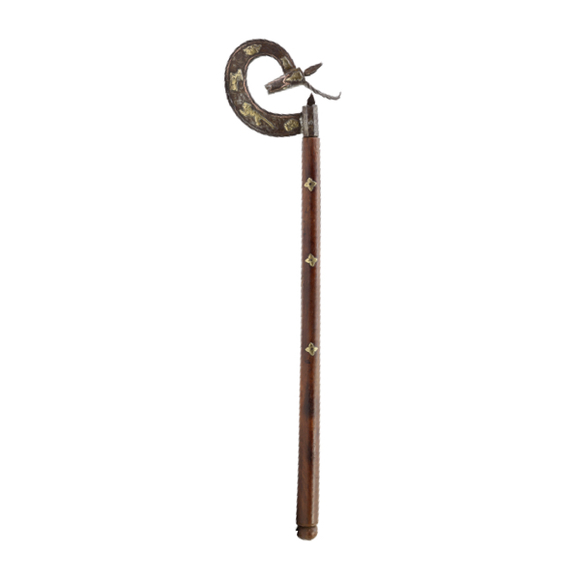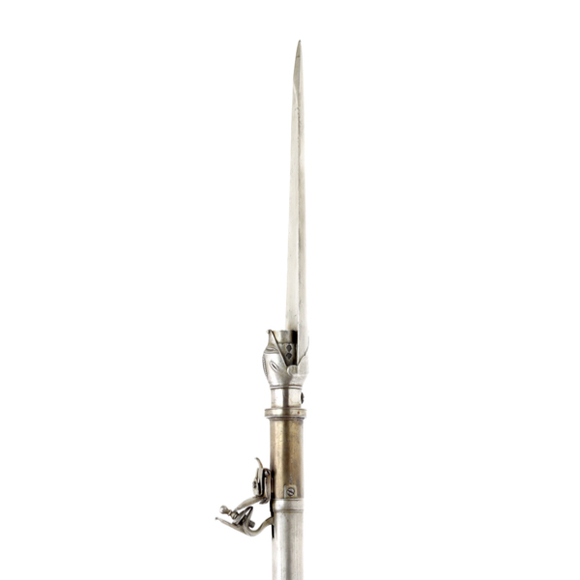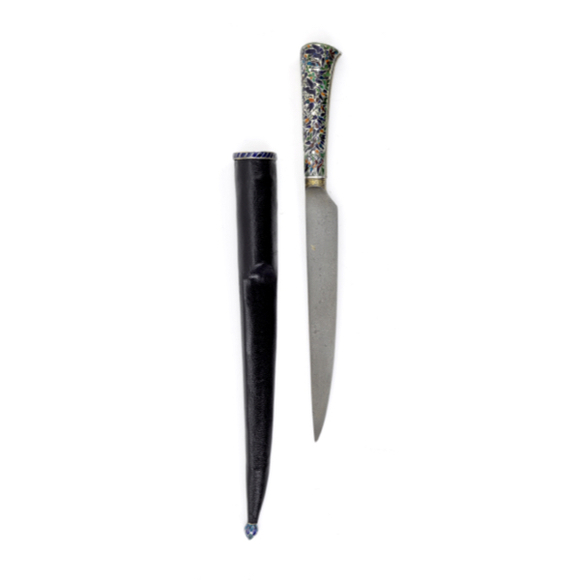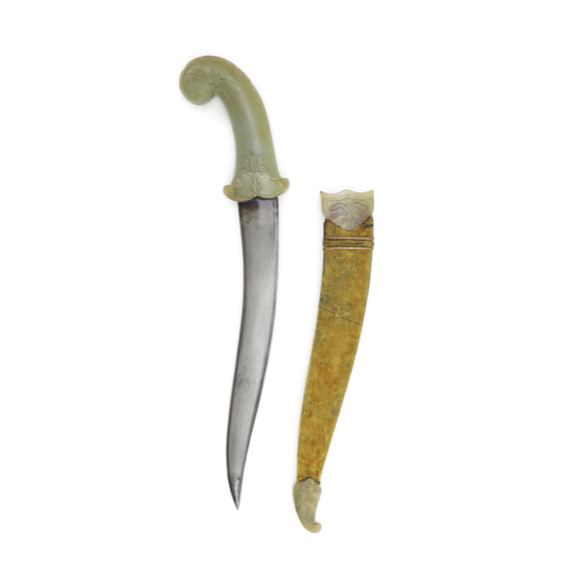These mysterious weapons were already obsolete when the first ethnographers encountered them.

Total 73.8 cm
Effective 70 cm
(Inside nock to base head)
Length 34 mm
Width 8 - 8.5 mm
Average 22,75 grams
21 - 25 grams each
North India
Steel, brass, reed, lacquer, pigments, sinew, wood
18th - 19th century
Introduction
In collections of (Asian) arms and armor, arrows are often not very well represented or sometimes even completely absent. This while for most warriors, especially throughout Asia, the bow has long been a primary weapon and the sword often just a backup like the modern soldier would carry a bayonet.
Antique arrows, especially those of established states or empires, are often rather sophisticated in design and well finished. There was a lot of variation in head designs, all with their own specific purposes.
A group of arrows says more about the quality of arrow manufacture in a region than a single arrow can. The archer's maximum attainable level of accuracy is determined by how well the arrows are matched in terms of weight, shaft stiffness, etc.
Collecting and studying them can be a joy.
Description
A nice set of Indian military arrows that are fitted with facetted points, known in the English language as bodkins. Such arrows were devised primarily to go through plate armor. This is not to say they made plate obsolete: A bodkin arrow needs to strike with a lot of force, and under just the right angle, in order to have any chance of doing damage through plate. Some thicker plate could never be penetrated well, but as a trade-off, it impeded the wearer's movement more.
Six of the arrows have identical heads that are pretty much of square crosssection at the thickest point. Two arrows have a slightly more flattened/widened profile depending on how you look at it.
The tanged heads are mounted on the shafts with a number of iron and brass washers between the shaft and the base of the head.
The shafts are bamboo or reed, with tails painted a pale green and bulbous inserted nocks. There are remains of three fletchings on the shaft.
Dating/Attribution
These arrows are probably North Indian and made in the 18th or early 19th century. Compare the heads to an arrow from the armory of the Maharajah of Alwar.1
Conclusion
A nice grouping of eight arrows that are of the same set, showing two slightly different varieties of Indian armor-piercing arrowheads.
Notes
1. Roy Elvis; The Hindu Warrior. Self-published, 2020. Page 417.







This peculiar sword was used by the Garo people of Assam for fighting, clearing the jungle, and animal…
A what? Yes exactly. An extremely rare piece, the only example I am aware of in published collections at…
With designs of animals, often attributed to Lucknow, north India.
Nice and complete with opaque green hilt and scabbard mounts.

